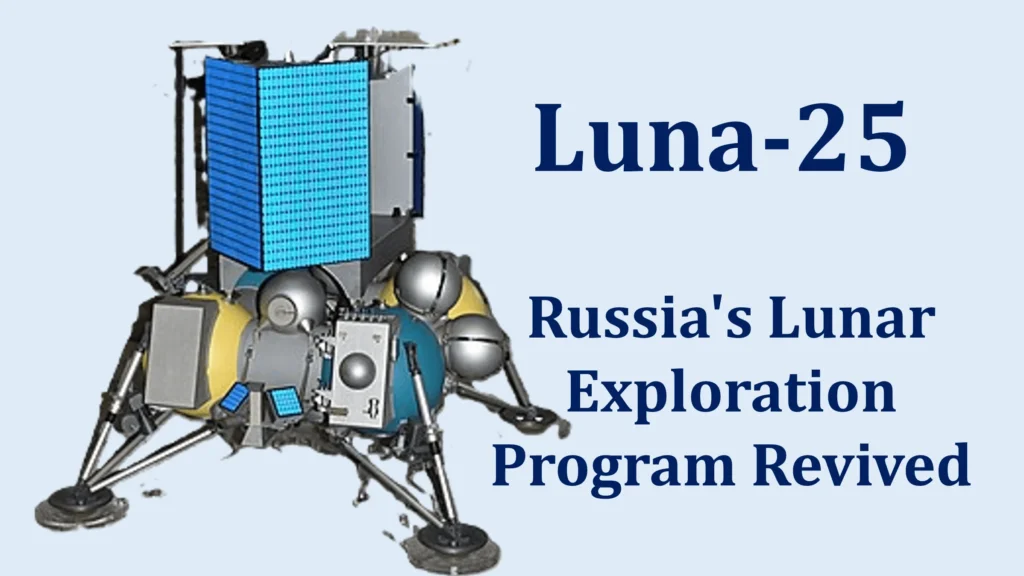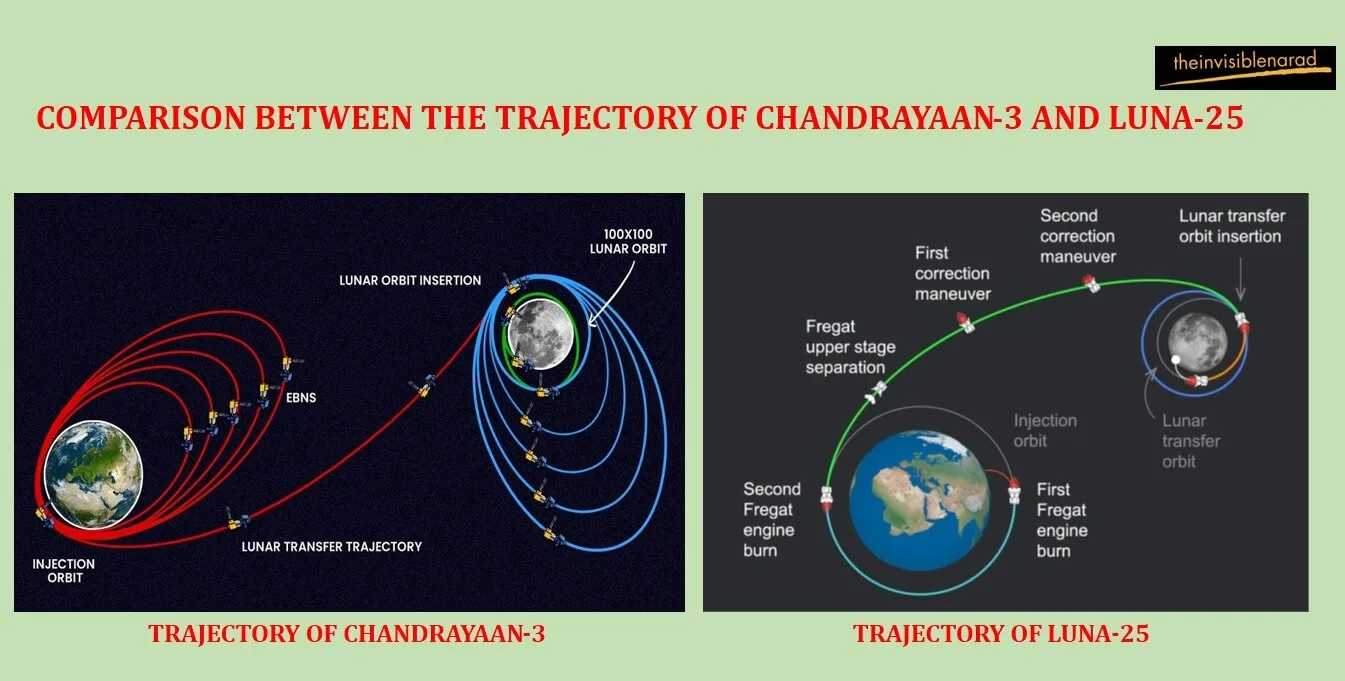
Hello! My dear readers. Hope you are doing good. The special bond between India and Russia is not hidden to anyone. The two countries have shared the stage together on many occasions. Yet again they are going to share the success of moon exploration simultaneously. Today, I have decided to bring before you the information about the Russian Lunar Mission which might shatter the dreams of India by becoming the first country to land its probe on the south pole of Moon.
Russia has once again kick started its lunar exploration program with the launch of its Luna-25 mission on August 10th, 2023, by sending a lander towards Moon. The Luna-25 mission took off from the Vostochny Cosmodrome in the Russian Far East’s Amur region via Soyuz-2.1b rocket. The launch occurred from the same site where the Soviet Union had launched its Luna-24 mission in 1976. Luna-24 had successfully brought back samples of the moon to Earth. However, Luna-25 marks a significant step as it is the first domestically produced lunar probe in Russian space history.
According to the Russian Space agency (ROSCOSMOS) if all goes according to plan, Luna-25 will spend the next five days traveling to the moon, followed by five to seven days orbiting Earth’s natural satellite. Thereafter, the spacecraft will attempt its soft landing near the Boguslavsky Crater in the southern polar region of the moon. (There are also backup landing spots in play: the Minzini Crater to the southwest and the Painted Land A Crater to the south.)
Once it has safely landed on the lunar surface, the mission of Luna-25 will start which will last for at least one Earth year. The mission of Luna 25 is to study the terrain of Moon and conducting various scientific experiments.
The Journey to the Launch Pad
Luna-25’s journey to its launch pad took longer than expected with about a two-year delay in its liftoff. This delay was partly due to geopolitical tensions including Russia’s invasion of Ukraine, which began in February 2022. The European Space Agency (ESA) had initially been tapped to provide the Pilot-D navigation camera, specifically designed to assist Luna-25 in achieving accurate landing on the moon’s surface. However, due to the ongoing Russia -Ukraine conflict, ESA has canceled all collaborative space projects with Russia along with its camera cooperation for the mission.
Nonetheless, the primary goal of sending Luna-25 to the moon remained a priority, as emphasized by Russian President Vladimir Putin. During a visit to the Vostochny Cosmodrome in April 2022, Putin made it clear that the sanctions imposed by the United States, the European Union, and other countries wouldn’t stop Russia from exploring space. He said, “Even though we’re facing challenges and outside pressures, we’re fully committed to carrying out all our plans with unwavering determination.”
Luna-25’s Objectives
Luna-25’s main objectives comprises of the testing technology for soft landing on the moon’s surface for the future missions by analyzing lunar soil, rocks and conducting another scientific research. If its landing is successful, the spacecraft will study the upper layer of lunar regolith, assess the extremely thin lunar exosphere and search for signs of water ice in the lunar south pole region.
In terms of landing capabilities, the 1.6-ton Luna-25 is fundamentally distinct from its Soviet predecessors. Previous Soviet lunar landers had touched down in the lunar equatorial region, whereas Luna-25 is set to land within a region that includes a permanently shadowed area.
Designed, built and tested by the Russian aerospace company NPO Lavochkin, Luna-25 comprises two main components. The first component is a landing platform that is equipped with a propulsion system and landing gear. It also includes Doppler velocity and range meters. The other component is an unpressurized equipment container housing scientific instruments, radiators, electronics, solar panels, a radioisotope heat and power source, antennas and television cameras.
Exploring Uncharted Territory
Luna-25 carries several instruments, with a total weight of approximately 30 kilograms, to carry out its mission:
- Service television system (STS-EL)
- Lunar Manipulator Complex (LMC) with soil sampling tools
- Neutron and gamma-ray detector (ADRON-LR) for remote ice detection
- Infrared spectrometer (LII-TV-RPM)
- Laser mass spectrometer (LAZMA-LR)
- Ion energy-mass analyzer (ARIES-L)
- Dust monitor (PML)
- Scientific Information Control Unit (BYUNAI)
Maxim Litvak, the chief scientist of Russia’s Space Research Institute (known as IKI), emphasized, “In simple words, Luna-25’s most important task is to sit where no one has sat before.” He further elaborated, “Now everyone is targeting the polar regions; this area is interesting to everyone in the scientific community. The Luna-25 landing site contains ice hints which can be seen from the class data. It’s not the case in equatorial areas.”
In fact, Luna-25 is planned to touch down at roughly the same time and in the same general region where India’s Chandrayaan-3 mission is set to explore. Chandrayaan-3 which was launched by India on July 14th has already reached into the lunar orbit on August 6th. United States through its space agency NASA is also aiming to mark its presence on the moon through their ambitious missions which are yet to be executed.
Reason behind Luna-25 early arrival than Chandrayaan-3
Even though Luna-25 took off after Chandrayaan-3’s made its entry into the lunar orbit, it will reach the moon’s surface in just a matter of days. Here are some reasons behind this early arrival of Luna-25:
- The payload of Chandrayan-3 is more than the double of Luna-25. Chandrayaan-3’s Lander-Rover alone weighs 1,752 kg which is 2 kg more than the entire Luna -25. Chandrayaan-3 further comprises of a propulsion module which adds an additional 2,148 kg making it to 3,900 kg in total. The lighter payload enabled Russian Space Agency to take more direct trajectory.
- Russia has used Soyuz 2.1 launch vehicle for its latest moon mission which is much more powerful than India’s LVM3 and is capable of providing necessary thrust enabling the spacecraft to directly reach the moon’s orbit. Moreover, it has more fuel carrying capacity that gives the mission a chance to take direct route.
- Luna-25 has the ability to touch down a few days earlier because it is influenced by the timing of lunar dawn at its landing site. A lunar day, equivalent to 14 Earth days, plays a crucial role. With solar panels powering the payloads, landing at the beginning of a lunar day guarantees a full 14 days for conducting experiments.

Chandrayaan-3 vs Luna-25
Besides its lighter weight compared to the Indian counterpart, Luna-25 lacks a rover. Chandrayaan-3, on the other hand, boasts a capable rover capable of covering about 500 meters. The Russian spacecraft is equipped with eight payloads. It has the prime responsibility of studying the soil on the moon surface, the dust particles in the polar area and most importantly finding water on the surface.
The Indian mission also has special tools for studying the soil on the moon and the ice made from water. They chose to land near the bottom part of the moon because there are holes that are always dark, which makes it more likely to find ice made from water there.
Upcoming Russian Lunar Missions
The Lunar Manipulator Complex (LMC) aboard Luna-25 is capable of digging into the lunar regolith. It will then transport the samples to the Laser Mass Spectrometer (LIESMA-LR). Additionally, an infrared spectrometer on this hardware can analyze materials from a distance, potentially identifying the presence of water ice.
Russia has already scheduled its further mission such as Luna 26. Moreover, there are two more missions in the roadmap of Russia’s Lunar Exploration. Luna-27 will head to the moon with a drilling machine. Whereas Luna-28 aims to gather soil from the moon’s polar regions and bring it back home to Earth. What’s really intriguing is that these lunar adventures could pave the way for the establishment of a full-fledged science station right there on the moon.
Lev Zelyony, the scientific director of IKI, stated, “I hope that the first person to sit in polar regions, to conduct the first direct experiment in studying and searching for water, will come from our program. This will be the foundation from which everyone else will start. So, the success of Luna-25 is of great importance, not only for pure fundamental science.”
Conclusion
After the gap of 47 years Russia’s lunar mission Luna-25 is on the way towards its mission on Moon. This mission will reveal the secrets of moon. The success of this mission will not only pave the way for more lunar exploration by Russia and many other nations but will also help us to know more about our one and only one natural satellite.
